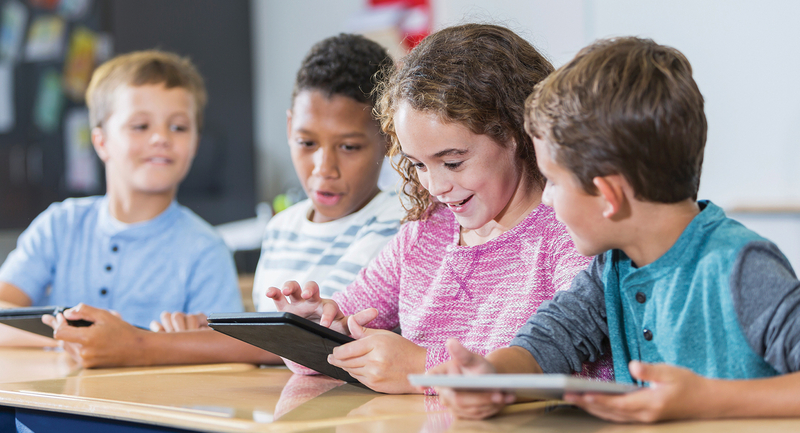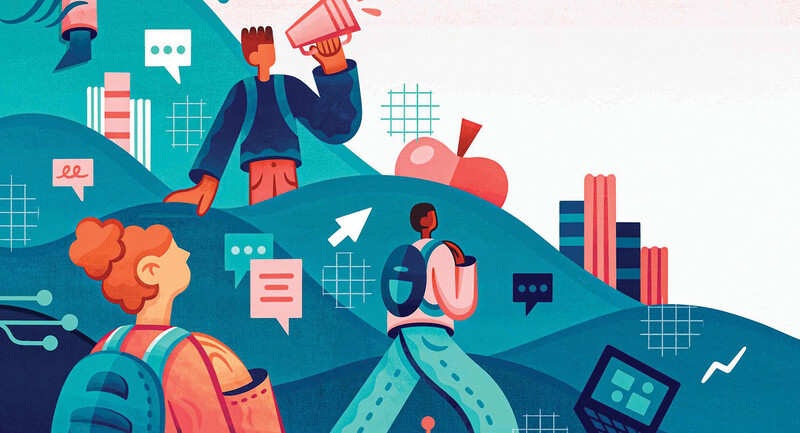When ISTE and ASCD merged earlier this year, one of the stated intentions was to "bring together best practices in the use of technology and evidence-based pedagogy." This special issue of Educational Leadership is an early attempt to exemplify that combination. Developed in partnership by ASCD and ISTE editorial teams, the issue—featuring articles by a topflight selection of tech-savvy educators and leaders—looks explicitly at ways digital tools and platforms can be used to augment high-leverage instructional practices and deepen learning. In exploring the intersection between technology and effective pedagogy, this issue is also very timely. The emergence of ChatGPT and other generative AI programs has spurred whole new conversations on the role of technology in schools. Meanwhile, many educators are still trying to determine the right approach to tech integration after the challenges (and device proliferation) of the remote-learning period during the pandemic.
The authors featured here may not have all the answers, but they offer plenty of insights and recommendations on how teachers and school leaders can think more creatively and strategically about the uses of edtech in this new landscape. Here are some key takeaways for reflection:
Ask big questions. As Tony Frontier writes, schools tend to use new technologies in ways that are either reflective of the status quo or transactional. With generative AI, Frontier argues, such approaches could prove disastrous, reducing an innovation that has the potential to reshape the dynamics of teaching and learning to a mere secretarial or data-processing function. To work toward more meaningful solutions, educators can start by asking "big, open-ended questions that discard old assumptions" about how things are done in the classroom. As other contributors affirm, using technology in ways that deepen student learning often requires getting out of instructional ruts. Using technology in ways that deepen student learning often requires getting out of instructional ruts.
Put pedagogy first. Of course, this doesn't mean abandoning the principles of effective instruction. Indeed, in his piece, Bryan Drost outlines research showing that districts that had the most success during the pandemic shift to online learning tended to have sound instructional structures in place—including a consistent instructional framework, clearly outlined pedagogical options, and strong formative assessment cycles. As Clare Kilbane and Natalie Milman echo in their article on differentiated instruction, "the goals of instruction … should drive the design of learning experiences and technology's integration within it." Make it active. School makerspace director Nicholas Provenzano writes, "I've learned there's one thing educators need to keep in mind [in integrating edtech into lessons]: The use of technology needs to promote active engagement." This idea surfaces often in the issue. Technology's greatest asset as an element of instructional design is its capacity to allow students to engage with and create content as opposed to just consuming it. This can lead to authentic learning experiences and opportunities for transfer of knowledge—both aspects of deep learning. Give teachers more and better support. If school systems want teachers to use technology to create richer instruction, they must provide more nuanced professional learning opportunities. This may include using PD models for edtech integration that turn the page on "one-off, one-size-fits-all" events and provide teachers with more continuous support, in addition to opportunities to experiment, collaborate, and engage in active learning of their own. Well-designed edtech coaching programs, Ashley McBride writes, can also be key in giving teachers more personalized and structured support. That is certainly preferable to the oft-prevailing practice of letting teachers figure things out on their own in the middle of a restive classroom, as "precious instructional minutes tick by." As this issue makes clear, to be effective in supporting deep learning, edtech-integration initiatives must be well-planned and cohesive, even as they allow space for educators and students to dream and forge new paths.
Reflect & Discuss
➛ Do you see yourself as a designer when crafting lessons? If not, how might shifting your perspective change the way you create learning opportunities for students?
➛ How might the 4Es help teachers evaluate technology tools in more helpful ways?
➛ Think of one technology tool you incorporated recently. Was it for transactional or transformative purposes? How might you use it differently?
➛ How might adopting a pedagogy-first approach to technology implementation help schools be better prepared for a future crisis?
➛ What criteria are currently in place for determining which technology tools you use in instruction? Do those criteria prioritize pedagogy?
➛ Has your school or district "overcorrected" by cutting back on tech use after the pandemic? What are the pros and cons of this approach?
➛ How well-supported is the role of edtech coach in your school or district? What could be changed to make edtech coaches more central to instructional planning and PD?
➛ Have you ever had an edtech coach? What did you like or dislike about the arrangement? How could it have been improved?
➛ What type of tech-integration PD would be most helpful to you and/or your school? What about this model is most useful or replicable?
➛ Where does PD on edtech most often fail? Why?
➛ What would a "PD Snack" look like for you? Could you create something similar to share with colleagues?








